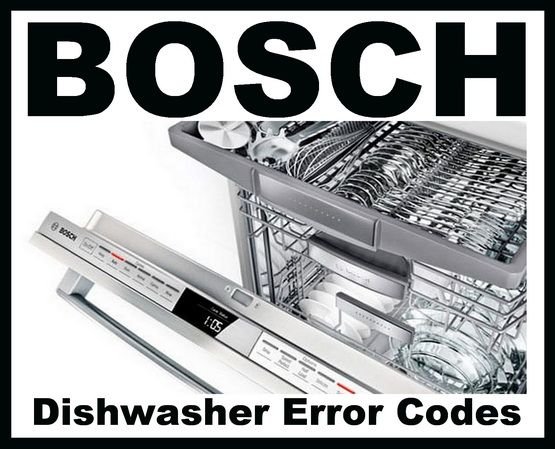
An error code, in general, is the machine’s way of telling you something’s amiss. With Bosch dishwashers, the “Error Code OE” is no different. Think of it as a red flag indicating potential drainage issues. Imagine a bathtub that just won’t empty; all that water will eventually spill over if left unchecked. Similarly, if your dishwasher can’t drain properly, it’ll lead to standing water inside the machine, which is the last thing you want when cleaning your dishes. Now, let’s break down what exactly could be causing this and whether it’s safe to keep using your dishwasher when you see this code.
Understanding Error Code OE
Here’s the deal: Error Code OE primarily indicates a problem with the dishwasher’s drainage system. Sometimes, it’s something minor like a kinked hose; other times, it’s a bit trickier, like a failing pump or a clogged filter. Let’s dive in, shall we? Imagine trying to drink through a straw that’s blocked—you wouldn’t get much liquid through, right? Similarly, if your dishwasher’s drainage is blocked, the water cannot leave the machine as it should.
One likely culprit could be a clogged filter. Over time, food particles and other debris can accumulate in the filter, much like hair clogs a shower drain. This build-up prevents water from flowing out effectively. Got a kink in the hose? That’s another possibility. Like a garden hose bent at an awkward angle, a kinked drain hose can stop water in its tracks.
Another potential issue might be a malfunctioning pump. The pump is essentially the heart of the drainage operation. If it fails, the water won’t move anywhere. Think of it like a tired bicycle pump that suddenly stops inflating the tire—it just can’t do its job. Each of these scenarios requires a different solution, and understanding them can help you determine the best course of action.
Assessing the Situation: Safety First
Now that you know what Error Code OE means, you might be wondering: “Is it safe to keep using my dishwasher?” The short answer is no—at least, not without addressing the underlying issue. Operating a dishwasher with unresolved drainage problems can lead to water spills, which might damage your kitchen floor or cabinetry. Moreover, consistent drainage issues could eventually cause the motor or other components to burn out, leading to costly repairs.
What can you do? Start by inspecting the drainage system. Look for obvious signs of blockage or kinks in the hose. Sometimes, simply straightening out the hose or cleaning the filter can solve the problem. If you find it’s something more technical, like a faulty pump, it might be wise to call in a professional. Remember, working with water and electricity should always be approached with caution. If you’re unsure or uncomfortable handling it yourself, seeking expert help is the safest bet.
Preventive Measures and Final Thoughts
Once you get your dishwasher back in tip-top shape, you might want to take a few preventative steps to avoid seeing Error Code OE again. Regularly cleaning the filter is a good start. Just like brushing your teeth prevents decay, keeping the filter clean stops debris from building up. Check the drain hose periodically as well—make sure it’s free from kinks and positioned correctly.
Also, consider the type of detergent you’re using. Some detergents can leave behind residue that contributes to clogs. Opt for a high-quality dishwasher detergent designed to minimize build-up. And hey, while it might be tempting to stuff every dirty dish you can find into your dishwasher, it’s important not to overload it. Keeping a balanced load helps water circulate more effectively.
In conclusion, while the Error Code OE might seem daunting at first, addressing and preventing the underlying issues is totally manageable. By understanding the basics of the error and taking a few simple steps, you can keep your Bosch dishwasher running smoothly. Should you ever face similar issues again, you’ll know exactly what to do—saving you time, money, and a whole lot of stress.